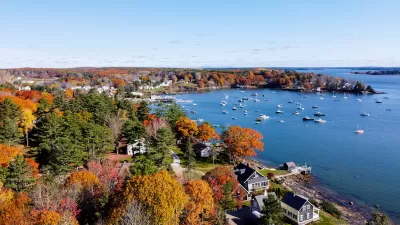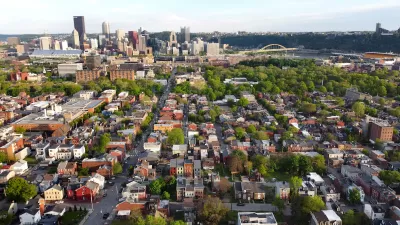Though the state is considered a model for smart planning, Oregon's sprawling landscape shows that the state has much the same problems as the rest of the country.
"His uncle was a big-time civil engineer, traveling the world, leaving his fingerprints on projects across several continents.
But Leonard Rydell's engineering career kept him closer to his Oregon roots. And after 36 years laying out the road and service grids for projects throughout suburban Portland -- including much of Wilsonville's Charbonneau development -- he says he's come to realize the region's glowing reputation in urban planning is increasingly an illusion.
He smiled when 1000 Friends of Oregon and two other conservation groups recently called on state planners to change suburban sprawl patterns that, despite light rail and urban growth boundaries, have left 71 percent of Oregonians driving to work alone.
The "up, not out" idea of high-density mixed-use development is a great theory, Rydell said. But the development reality on the ground is that we're heading toward a destination that, in the end, will look and function almost exactly like most places across the country.
To make his point, Rydell jumps up from the chair in his office on the second floor of his Newberg home and rattles down the steps, out the front door, directly into the middle of the street in front of his home.
"What do you see?"
The shoulder-to-shoulder jumble of ranch homes, the cars jammed into the little driveways and lining much of the absurdly wide street is a scene from any city in America.
"Tell me," he continues, as a Chevy Suburban whizzes by us at a good 10 mph above the speed limit, "does it make you feel good?"
"Exactly," he says, guessing my answer, "and yet, this is still what pretty much every city's code is encouraging us to design and build."
Cookie-cutter subdivisions. Shopping clusters. Industrial and business clusters."
FULL STORY: Sprawl belies Oregon's rep for planning

Alabama: Trump Terminates Settlements for Black Communities Harmed By Raw Sewage
Trump deemed the landmark civil rights agreement “illegal DEI and environmental justice policy.”

Planetizen Federal Action Tracker
A weekly monitor of how Trump’s orders and actions are impacting planners and planning in America.

The 120 Year Old Tiny Home Villages That Sheltered San Francisco’s Earthquake Refugees
More than a century ago, San Francisco mobilized to house thousands of residents displaced by the 1906 earthquake. Could their strategy offer a model for the present?

Ken Jennings Launches Transit Web Series
The Jeopardy champ wants you to ride public transit.

BLM To Rescind Public Lands Rule
The change will downgrade conservation, once again putting federal land at risk for mining and other extractive uses.

Indy Neighborhood Group Builds Temporary Multi-Use Path
Community members, aided in part by funding from the city, repurposed a vehicle lane to create a protected bike and pedestrian path for the summer season.
Urban Design for Planners 1: Software Tools
This six-course series explores essential urban design concepts using open source software and equips planners with the tools they need to participate fully in the urban design process.
Planning for Universal Design
Learn the tools for implementing Universal Design in planning regulations.
Clanton & Associates, Inc.
Jessamine County Fiscal Court
Institute for Housing and Urban Development Studies (IHS)
City of Grandview
Harvard GSD Executive Education
Toledo-Lucas County Plan Commissions
Salt Lake City
NYU Wagner Graduate School of Public Service





























